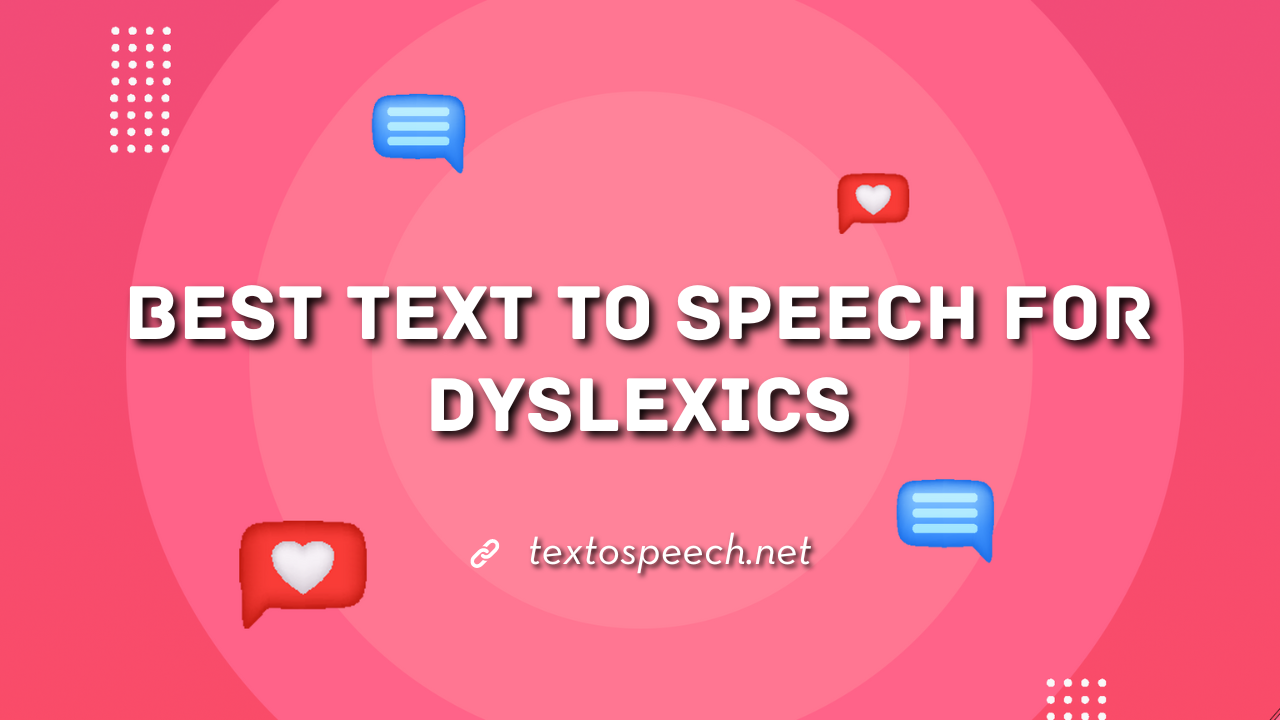Text to speech technology is a great tool for dyslexics, making reading easier by converting written words into spoken language. It helps dyslexics by reading out the text, which can make understanding and processing the information simpler and more effective.
In this article, we will discuss the best text to speech options available for dyslexics. We’ll look into various software and apps that are designed to support their reading and comprehension skills, making their learning experience more accessible and enjoyable.
Why Text to Speech For Dyslexics?
Text to Speech (TTS) tools can be a game-changer for dyslexics. They read out written text, making it easier to understand. This helps dyslexics who struggle with reading. TTS tools turn reading into a listening task. This is helpful because many dyslexics find listening easier than reading.
These tools also let dyslexics learn at their own pace. They can pause, rewind, and replay the audio as needed. This flexible learning style suits their needs better. Plus, TTS tools often highlight words as they’re read aloud. This visual aid can improve reading skills over time.
The best TTS tool for dyslexics should be user-friendly and customizable. It should have features like adjustable reading speed and a choice of voices. This makes the learning experience more comfortable and effective for dyslexic users.
5 Best Text to Speech For Dyslexics
1. TextoSpeech
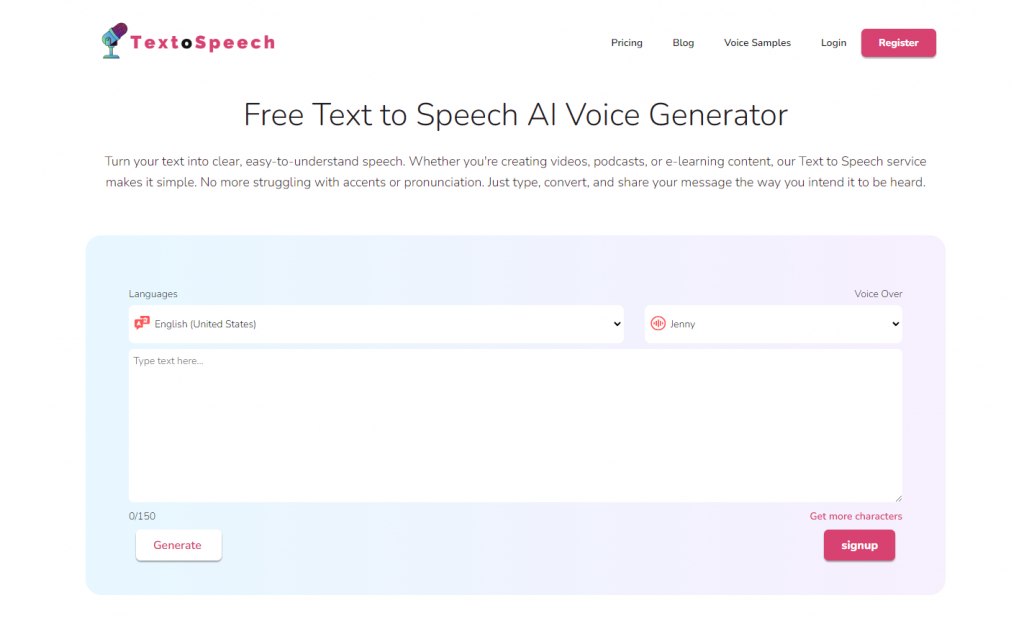
TextoSpeech is a text to speech tool that’s useful for people with dyslexia. It changes written words into speech. This helps dyslexics understand the text better because they can hear it.
The tool reads text out loud in a clear voice. This makes it easier for dyslexics to follow along. They don’t have to struggle with reading each word.
Also, hearing the text can improve comprehension. Dyslexics often understand spoken words better than written ones. So, this tool is a big help for them. It makes learning and reading more accessible and less stressful.
Pros
- Variety of Voices and Languages
- Ease of Use
- Time-Saving
- Cost-Effective
- Consistency
- Accessibility
Cons
- Limited Features in Free Version
- Lack of offline functionality
2. Speechify
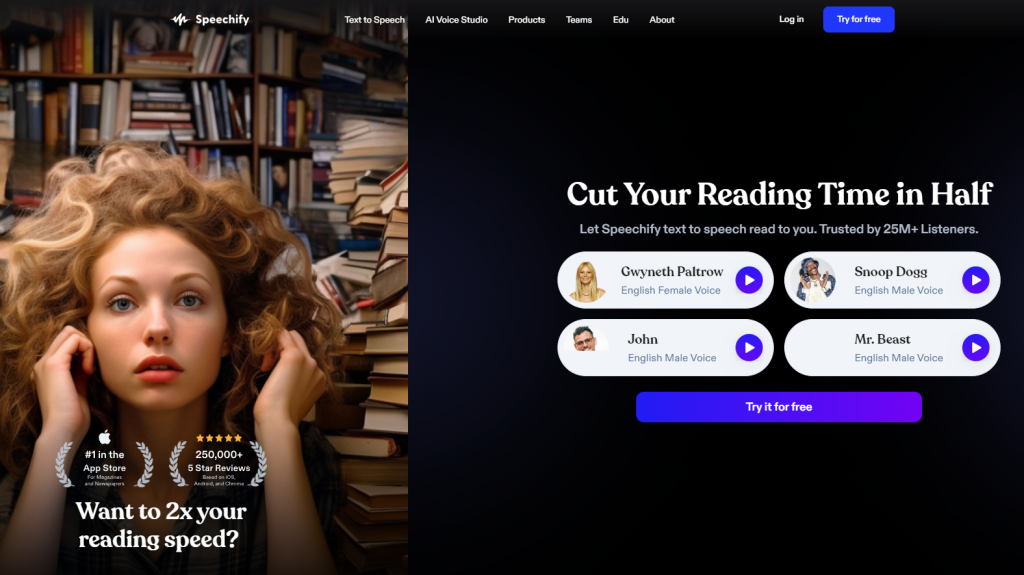
Speechify is a text-to-speech tool that’s helpful for people with dyslexia. It reads out text from websites, emails, and documents, which makes reading much easier. This is great because dyslexic people often find it hard to read text the usual way.
The tool can change the speed of reading and the type of voice. This means someone with dyslexia can listen at a pace that’s comfortable for them. It’s like having a book read to you in a way that suits your needs.
Lastly, Speechify is good because it helps dyslexic people to understand and remember information better. When they hear the text, it’s easier for them to process the information. This way, reading becomes less of a struggle and more enjoyable.
Pros
- Accessibility
- Language Learning
- Productivity
- OCR technology
- Support for Multiple Platforms
Cons
- Naturalness of Voice
- Accuracy and Pronunciation
- Subscription Costs
- Limited Context Understanding
3. Murf AI
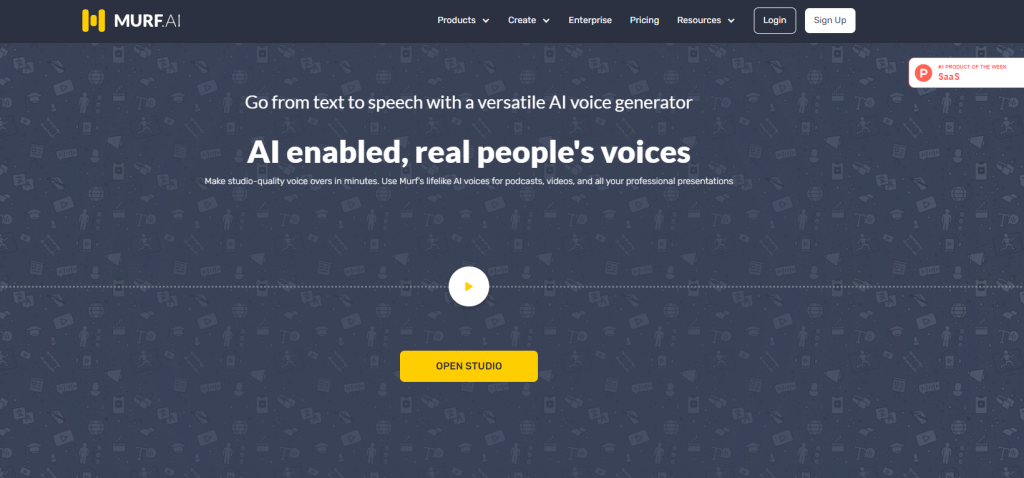
Murf AI is a text-to-speech tool that’s great for people with dyslexia. It reads out text, making it easier to understand. This helps dyslexics, who often find reading hard. Murf AI turns written words into spoken words, which can be easier to process.
The tool has different voices and speeds. This means users can pick what works best for them. It’s like having someone read out loud. This can make learning and reading more accessible and less stressful for dyslexics. It’s a helpful tool for anyone who struggles with reading text.
Pros
- Wide variety of voices
- Extra Effects
- Google Slides Add-on
Performance - Scalability
Cons
- Cost
Learning Curve - Reliability
- Customization
4. Natural Reader
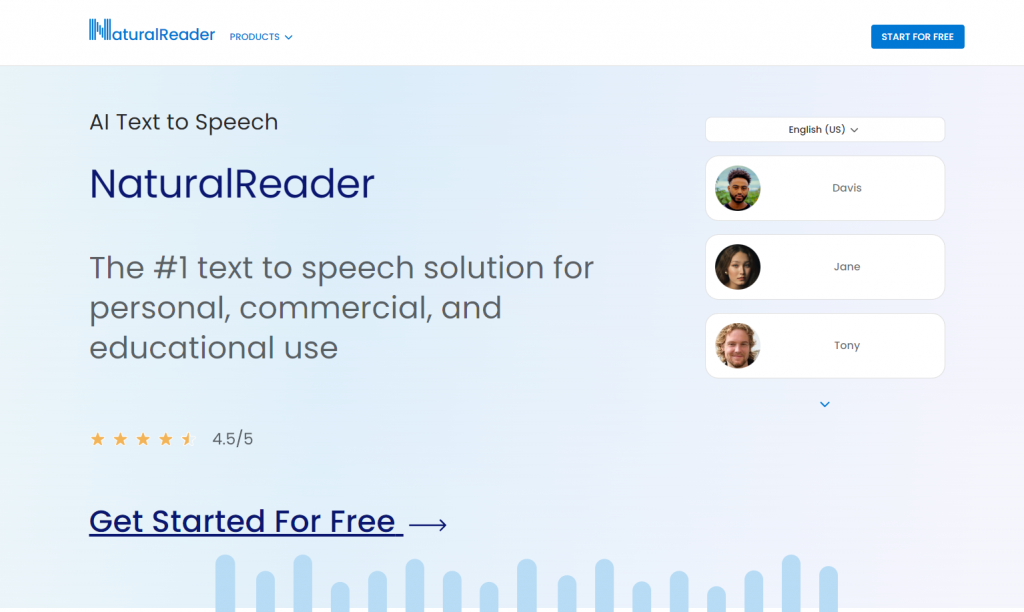
Natural Reader is a tool that reads out text for you. It’s really helpful for people with dyslexia. Dyslexia makes it hard to read, but hearing the words can make it easier.
This tool can read from websites, documents, and even photos of text. So, if you have trouble reading, you can just listen instead. It’s like having someone read to you.
Natural Reader is simple to use. You pick what you want it to read, and it starts reading out loud. This can help you understand better and make reading less stressful. It’s a handy tool for anyone who finds reading tough.
Pros
- Accurate and natural-sounding speech
- Wide range of language options
- Customizable voice settings
- Multiple platform compatibility
Cons
- Pronunciation limitations
- Limited free version features
5. ReadSpeaker
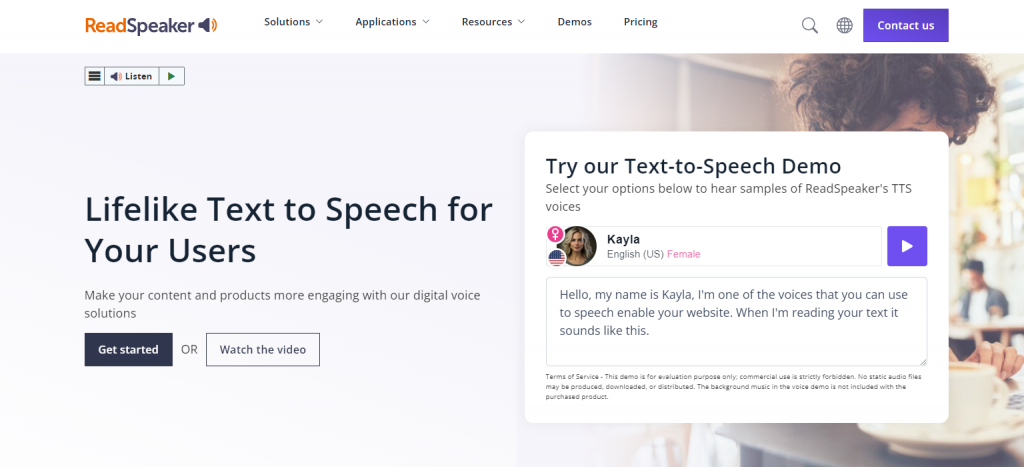
ReadSpeaker is a text-to-speech tool that’s good for people with dyslexia. It turns written text into spoken words, making it easier to understand. People with dyslexia often find it hard to read, but listening can be much simpler.
The tool reads out text from websites, books, and documents. This helps dyslexic people follow along without struggling with reading. It’s like having someone read to you, which can be a big help.
By using ReadSpeaker, dyslexic individuals can better understand information. They don’t have to worry about the stress of reading. This tool makes learning and getting information easier for them.
Pros
- Easy of use
24/7 customer support
Natural-sounding voices
Easy integration
Accessibility features
Cons
- High cost
Limited voice customization
Accuracy issues
FAQs
How does Text-to-speech help dyslexics?
TTS technology converts written text into spoken words. It’s helpful for dyslexics as it allows them to listen to text rather than struggle with reading, reducing the strain and frustration often associated with reading disorders.
Can Text-to-Speech improve reading skills in dyslexic individuals?
Yes, it can. TTS supports reading development by providing a clear model of fluent reading. It helps in understanding pronunciation and can enhance comprehension by reducing the cognitive load of decoding text.
Is Text-to-speech software easy to use for dyslexic learners?
Generally, yes. Most TTS software is user-friendly, with simple interfaces and customizable settings to adjust speech speed, voice type, and other features according to individual preferences and needs.
Does using Text to speech make dyslexics reliant on technology and hinder their reading development?
Not necessarily. TTS is a tool that assists in reading. It’s not meant to replace traditional reading methods but rather to complement them, allowing dyslexic individuals to access information more easily while they continue to develop their reading skills.
Final Words
Text-to-speech (TTS) tools are a big help for dyslexics. They make reading easier by reading out loud. This helps with understanding and following along.
Top TTS tools like TextoSpeech offer different features. They cater to various needs and preferences. In short, these tools are useful, user-friendly, and support dyslexics in their reading journey.

